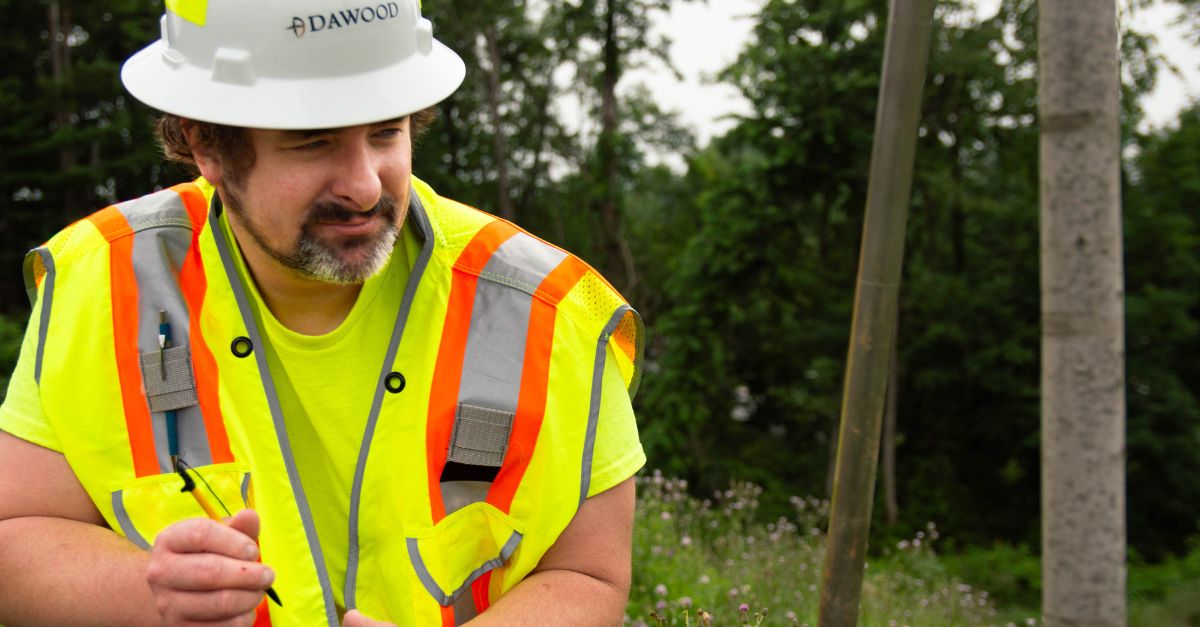Part One | Part Two
From legacy land use to subsurface sampling, Andrew Wicks transforms complex site data into actionable insights. In part two of his spotlight, he shares how Dawood supports Pennsylvania energy clients through Phase I and II Environmental Site Assessments.
Describe a recent Phase I ESA
Dawood assessed conditions for a pharmaceutical manufacturing facility and ground-level solar panels in central Pennsylvania. Our environmental team used historic aerial photographs, city directories, and topographic maps to determine past land use. Findings included fill areas, aboveground and underground storage tank locations, and hazardous material storage containers. We used site reconnaissance to verify desktop research and environmental risk findings, such as water treatment systems and improper material storage. Hazards included a leaking hydraulic component and potential asbestos-containing materials.
How about a current Phase II effort?
Dawood is conducting Phase II sampling of historical fill at a property near Conococheague Creek in southcentral Pennsylvania. During a previous Dawood geotechnical investigation, we observed fill materials in soils from operations prior to modern environmental regulations. Our crew reviewed contaminant concentrations exceeding state standards and proposed soil excavation and disposal.
Our environmental team delivers solutions for site risks like this, using various methodologies to collect and analyze samples for heavy metals and petroleum compounds. Analysis determines subsurface soil and groundwater conditions, enabling Dawood to make informed recommendations.
Through environmental site assessments, our clients gain a clear understanding of risks and opportunities, allowing projects to progress on solid and sustainable ground.

